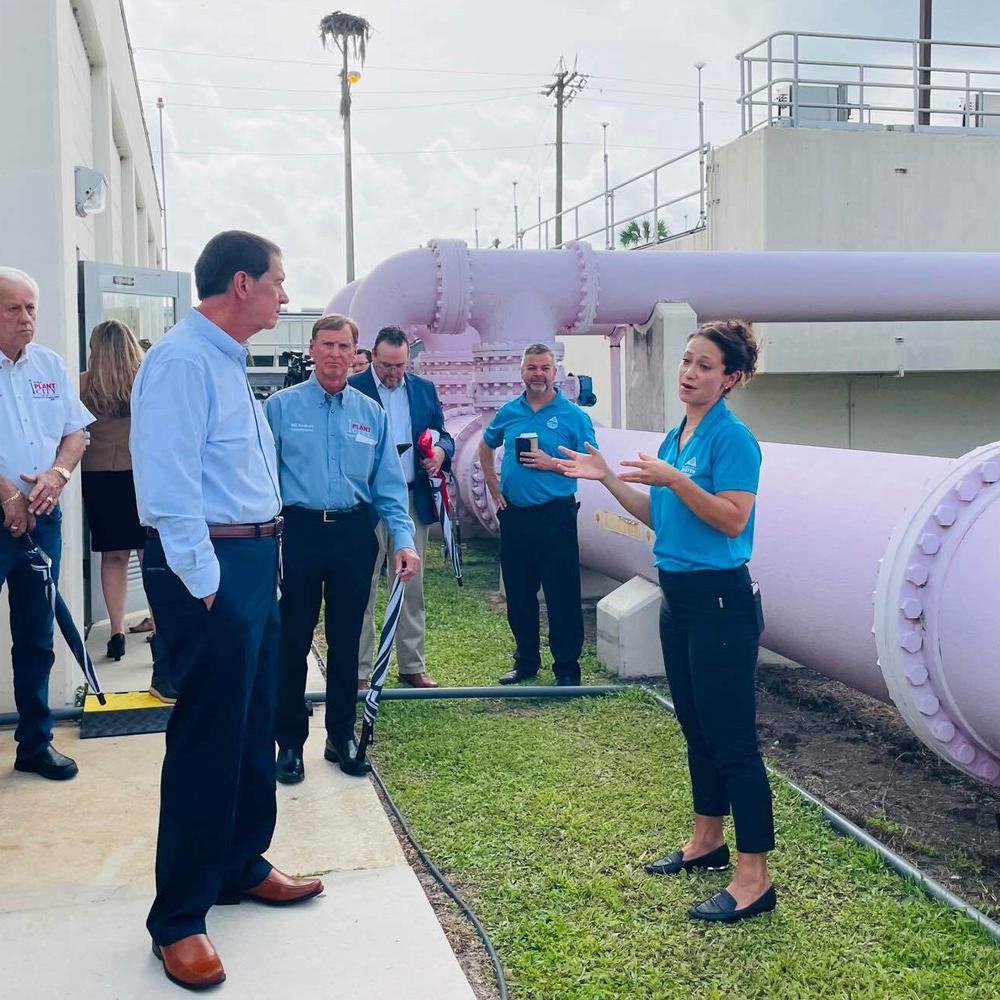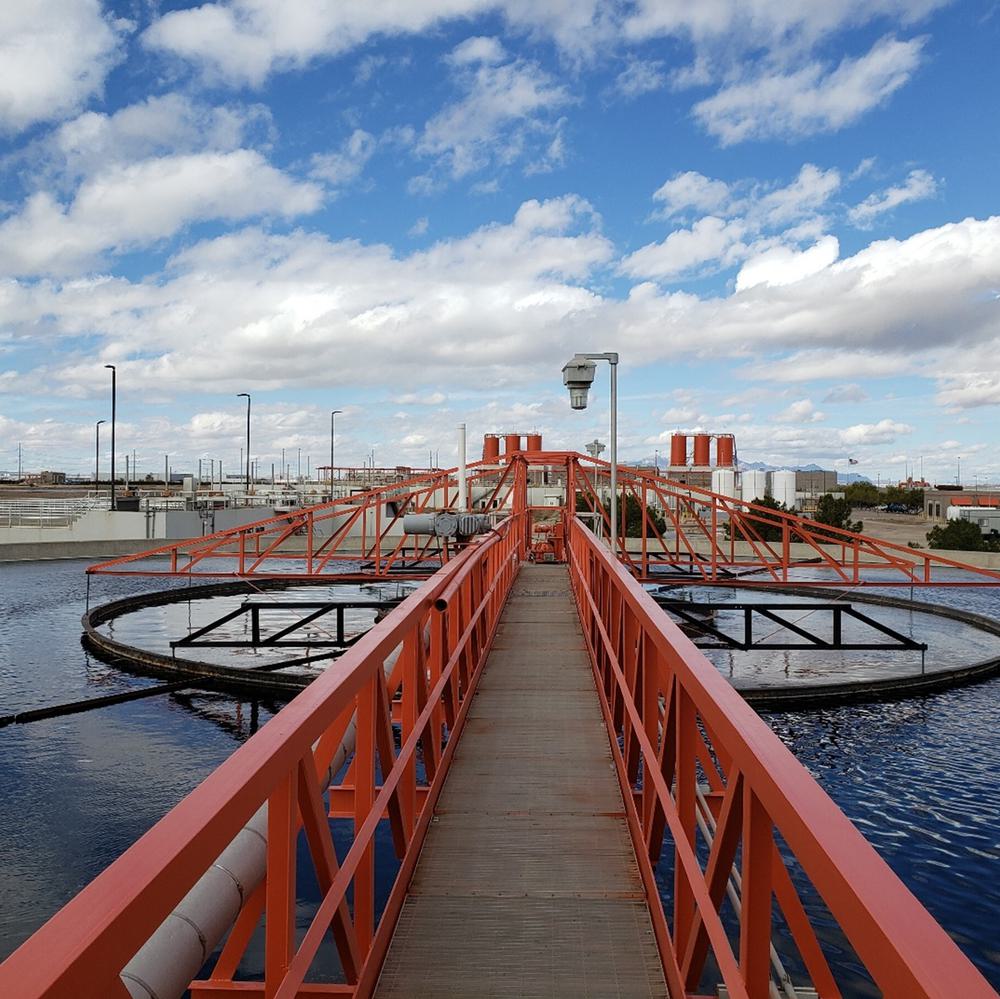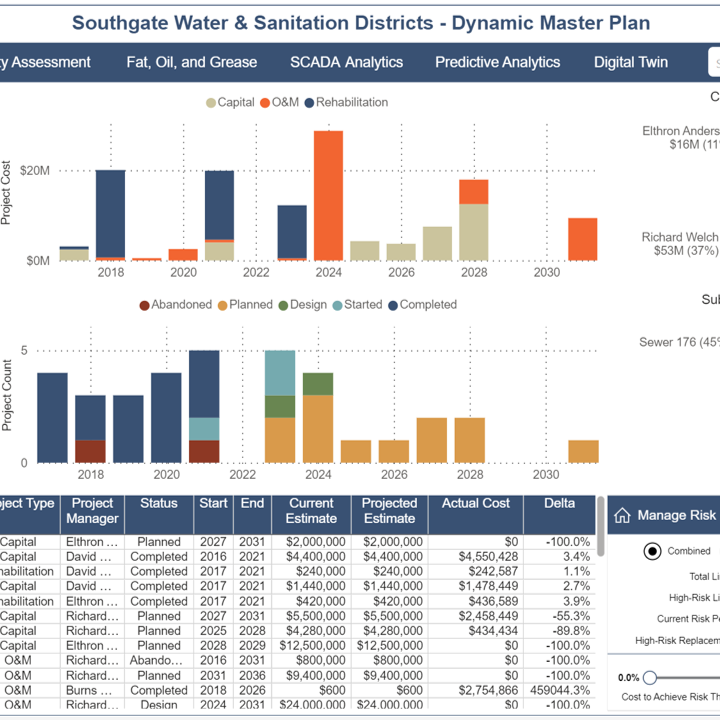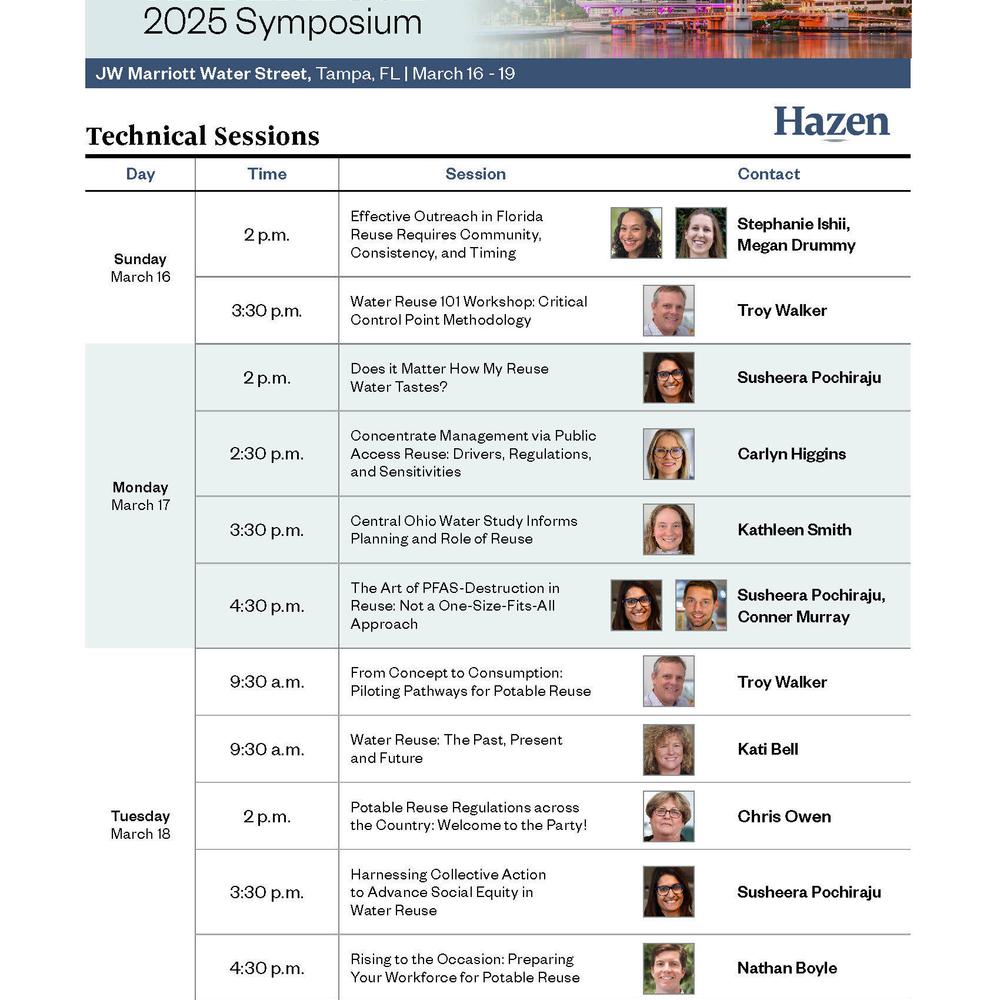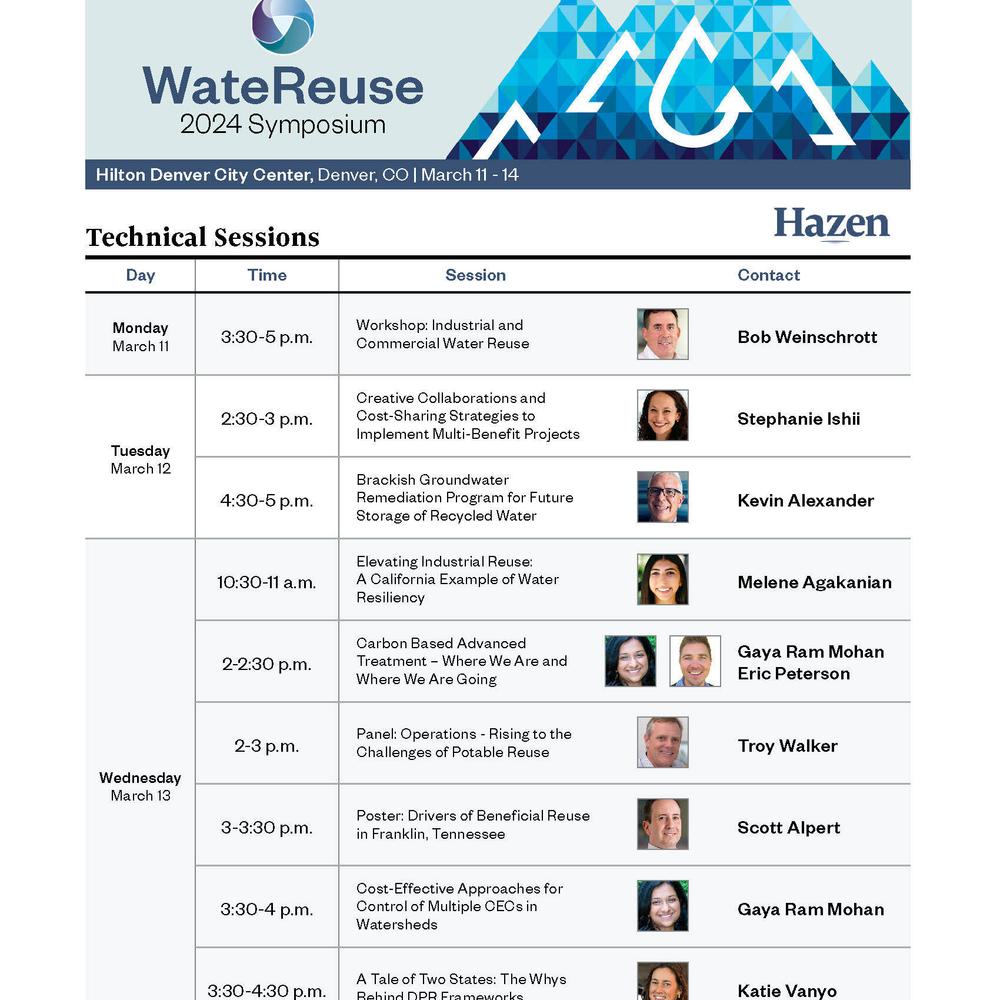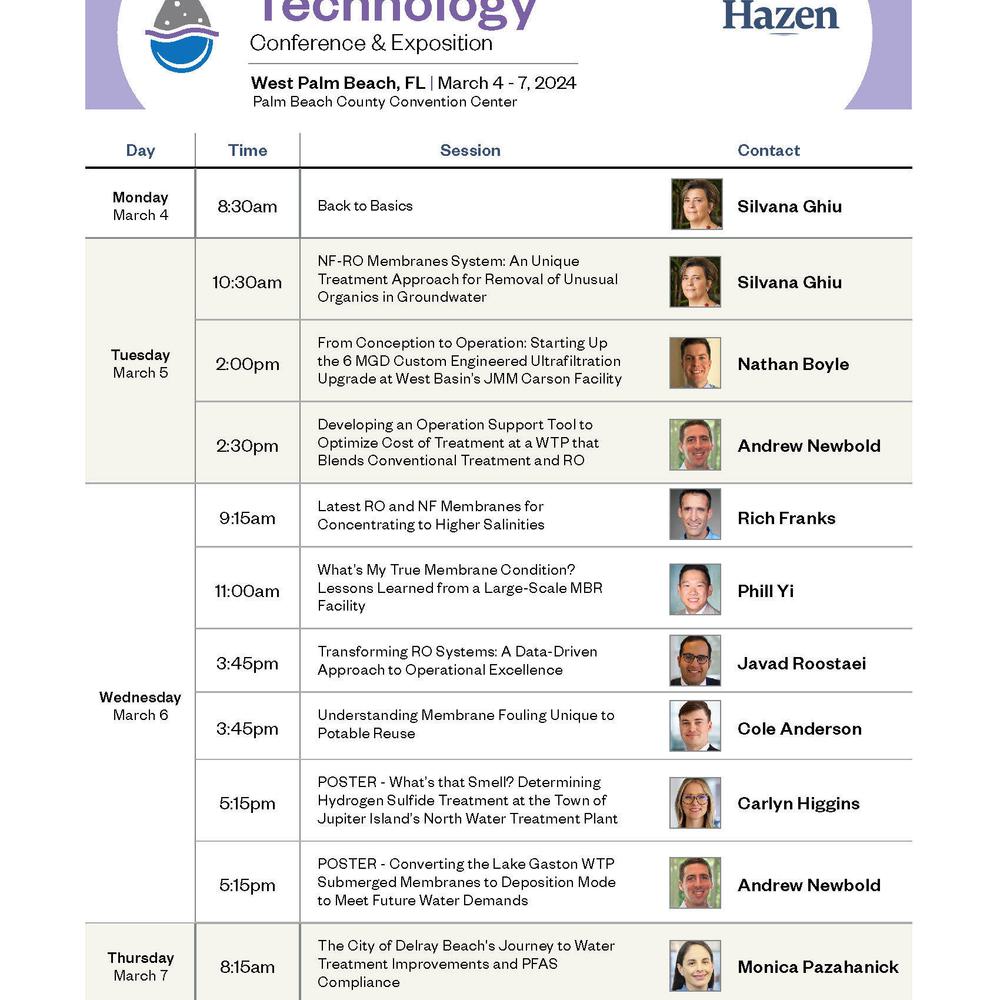Evaluating Long-Term Effects of Reuse Alternatives for Santa Fe, NM
The City of Santa Fe (NM) is proactively planning for long-term water supply. Their supply portfolio includes two surface water sources, two groundwater sources, and nonpotable reuse. In examining optimal use of existing resources, the City has identified seven potential ways to increase utilization of treated wastewater effluent. The City partnered with Hazen and Sawyer to evaluate the long-term effects of these alternatives, considering overall system interdependencies.
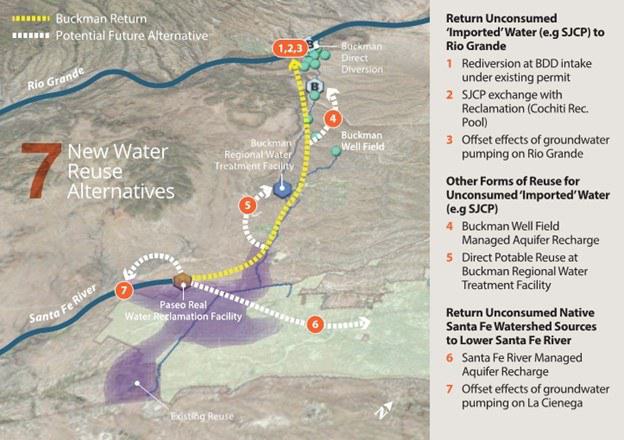
In examining optimal use of existing resources, the City of Santa Fe identified seven potential ways to increase utilization of treated wastewater effluent
For each alternative, the system-wide effect was evaluated, in terms of water savings and system resiliency, under a range of future conditions, including climate change effects on demand and surface water availability.
Hazen developed a system dynamics model, using GoldSim, to simulate the City’s diverse water supply portfolio. The model uses dynamic supply priorities to allocate supplies to meet monthly demand, through the end of the century, and flags gaps between supply and demand. The model explicitly tracks supply availability, including reservoir storage and evaporation, change in groundwater storage, and climate change-influenced hydrology projections. Climate projections can be run either as a single time series, e.g. the median, or stochastically across all 112 CMIP3 climate sequences. The model runs monthly, facilitating assessment of ability to meet peak demands, given various constraints on individual supply sources.

Greg Gates serves as Hazen’s Water Resources Group Leader and Albuquerque Operations Manager.
Related Topics:
Hazen used the model to assess each of the identified alternatives. Net water use and savings was quantified under the various future conditions. Results suggested that a long-term strategy utilizing multiple alternatives would provide the most robust and resilient water supply portfolio. Considering capital costs and timing of the need for water, a preferred initial alternative is being pursued. Results of the model are being used by the City to refine a permitting strategy for the preferred alternative and will lead into the next phase of comprehensive water supply planning.

Results of modeling one alternative, showing reduced groundwater use and decreased frequency of supply gaps.
The City plans to expand the model and use it to support a comprehensive long-range water supply plan. The model will facilitate updating of supply and demand projections as they are developed. It will also be adaptable, facilitating evaluation of new water management alternatives that are developed during the planning process.
Project Outcomes and Benefits
- Development of a system dynamics model, using GoldSim, to simulate the City’s diverse water supply portfolio
- Modeling results suggested that a long-term strategy utilizing multiple alternatives would provide the most robust and resilient water supply
- Adaptable model will be used to support a comprehensive long-range water supply plan


